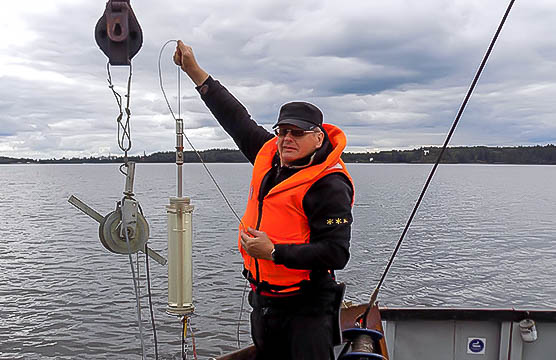
Coastal monitoring on Vyborg Bay in August 2020.
The SEVIRA-project’s coastal water quality monitoring task for this season were realized as planned. There were two sampling cruises in both countries at the same time in June and August. Sampling were syncronized with the satellite over-flights.
Russian cruises were organized by Northwest Administration for Hydrometeorology and Environmental Monitoring on the Vyborg Bay. Water quality samples were taken on eight sampling stations covering the bay area from shallow inner part of the bay over to the bay mouth with more deep and open outer-coast conditions.
On the Finnish side of the project area in Virolahti the coastal water quality data was gained through the ELY-Centre’s monitoring program but with some specific modifications in scope with the project aims.
The only setback to the coastal monitoring task was caused by the COVID-19 restrictions which had consequences to the traffic between Russia and Finland. This did not allow the pre-planned intercalibration between the laboratories with Vyborg Bay coastal samples as the situation prevented the delivery of the samples over to Finland.
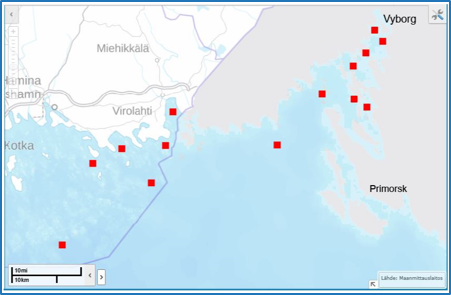
Sampling stations on Vyborg Bay and near-border Finnish coastal waters.
Results from monitoring
Preliminary analysis of the 2019-2020 results show that there has been an apparent decline in the eutrophic status of the Vyborg Bay since the beginning of 2000. The late summer consentrations of the chlorophyll-a in the water samples seem to reflect a remarkable reduction of the phytoplankton biomass in both the inner part and on more open middle part of bay area. Also the surface water nutrient concentrations appear to indicate at least some reduction in phosphorous loading. The results from outer coast areas on both sides of the border most likely will show similar stepwise (positive) development. The compilation of the results will continue.
During this year, satellite observations and station sampling has been combined both in Finnish and Russian coastal waters. In coastal station sites, the correspondence between the two monitoring methods is good. Satellite observations will bring more information on water quality also in areas and periods that are not monitored with station samples. COVID-19 did not have any effect on the use of satellite observations. Next year, SEVIRA-project will utilize both monitoring methods for the status assessment in Bay of Vironlahti and Bay of Vyborg.
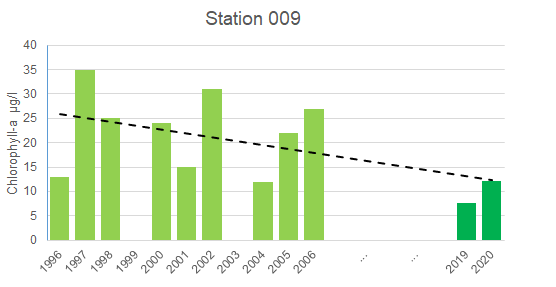
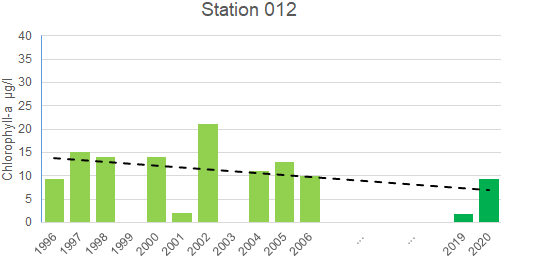
Trends in late summer chlorophyll-a consentrations (µg/l) in Vyborg Bay 1996-2006 and 2019/2020: a) at inner bay station 002, b) at more open middle part station 009 and station 012 at bay mouth area.
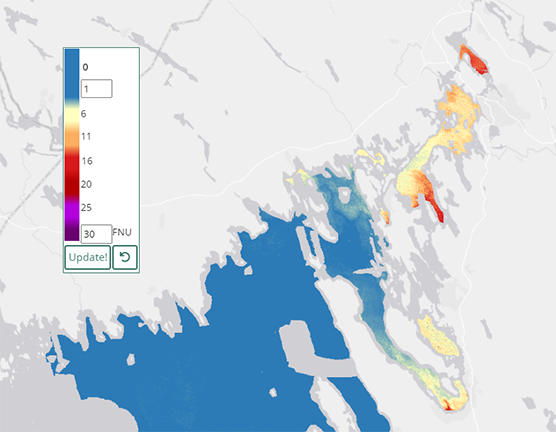
Turbidity estimate using Sentinel 2 satellite in the Bay of Vyborg, on 24.5.2020 Contains modified Copernicus data, SYKE.
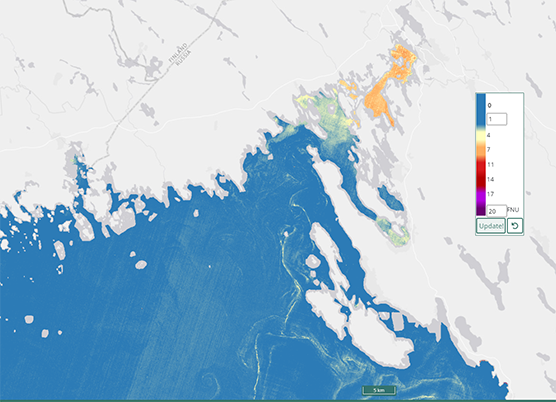
Turbidity estimate using Sentinel 2 satellite in the Bay of Vyborg, on 26.5.2020 Contains modified Copernicus data, SYKE.
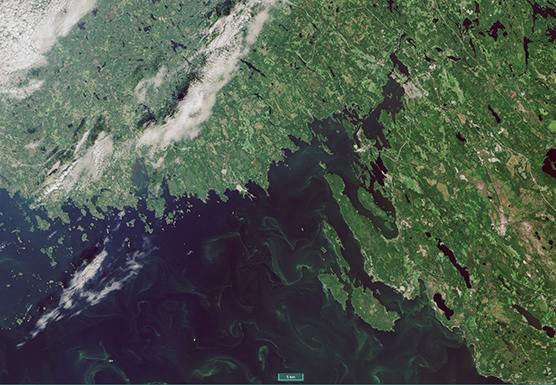
Cyanobacteria blooms in the SEVIRA project area , observed by Sentinel-2 satellite. Contains modified Copernicus data, SYKE.